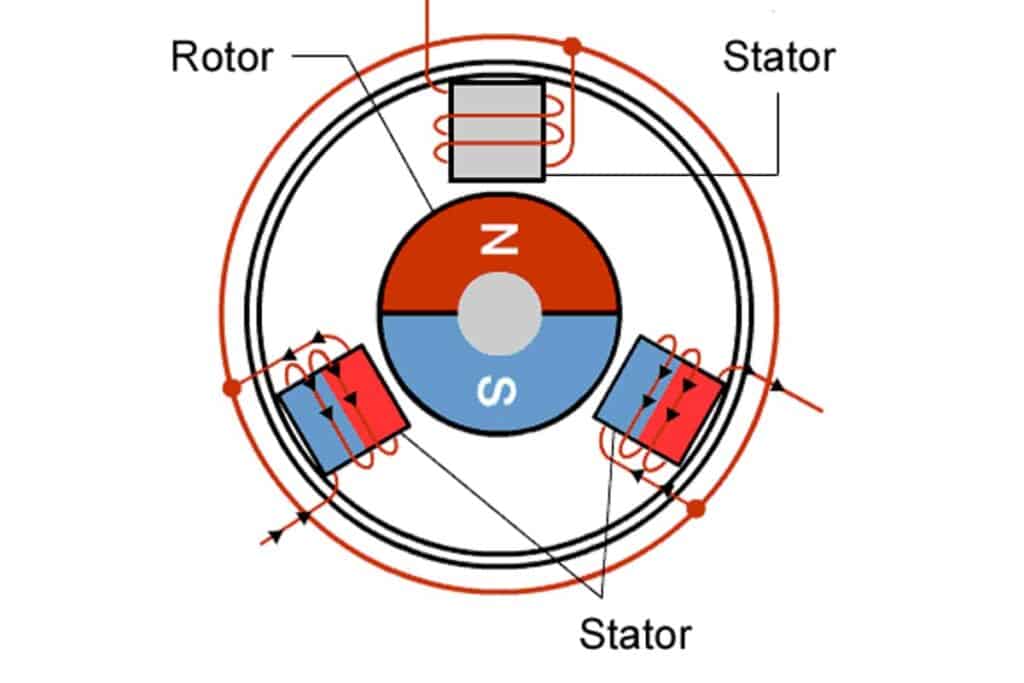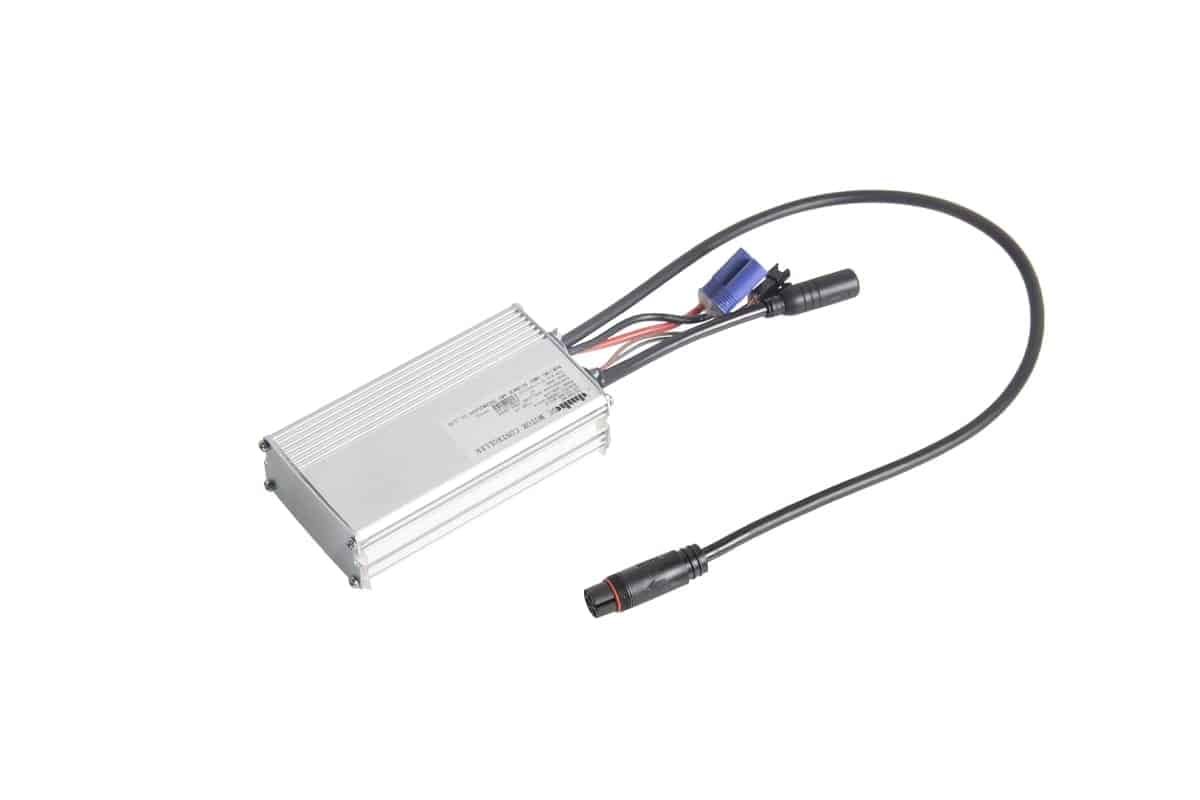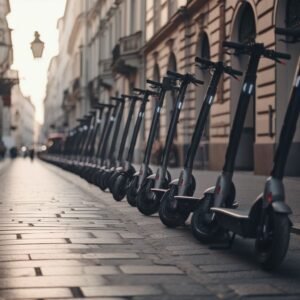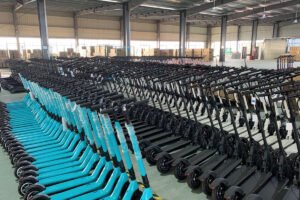Considering an e-bike’s motor is its “heart,” the controller is its “brain,” which determines how well an e-bike will perform.
Keep reading and you would know everything about the e-bike controller
Table of Contents
- What is the E-bike controller?
- Voltage and Power of eBike motor controller
- Controller Display
- How does the controller works
- What are the functions of an electric bike controller?
- Differernt types of E-bike controller
- How to choose the right controller
- Famous Chinese Electric bike and scooter controllers
- Final Thoughts
What is the E-bike controller?
The motor controller is also known as the electric e-bike controller or electric speed controller. It is a circuit board in a sealed protective box with several connection wires sticking out.
It’s mounted inside of an e-bike connecting and putting all key components together, like motor, battery, paddle assistant, LCD display, sensors, and throttle, to control the motor’s speed, start, and stop.
If the motor acts as the “heart” of an e-bike, then the controller is their “brain,” which is the main factor to determine the performance of an e-bike.
The controller serves two main purposes:
It controls and regulates the flow of current from the battery to the motor in an e-Bike
Most controllers have the capability to provide regenerative braking. The resting power is going to be sent back from the motor to the battery to save energy when it works.

Voltage and Power of eBike motor controller
The higher current and voltage the controller has, the more powerful eBike it can drive. 36V, 48V, and 60V are the most common controllers for electric scooters and e-bikes among the common kinds from 12 volts to 72 volts.
High-performance eBike are usually equipped with high voltage controllers, such as 52V, 25A, 60V 40A, and 100V, 400A.
Most commute scooters or eBike just have a single controller while extreme performance versions typically have dual motors to get more power.
Controller Display

The controller display is usually located in the middle of the handlebar of the eBike for viewing convenience.
This LCD screen is the key interface between you and your eBike
It can turn the motor on and off and keep you up to date on speed, where you are in the total range, battery level, pedal assist level, and more
And you can operate on its menu to set up the power of assist, and to know if you need to charge your battery.
How does the controller works
The motor, as we know, translates the electrical energy into mechanical energy, and the controller is the bridge that takes power from the battery and delivery it to the motor depending on the sensors and rider’s input.
As the central hub, the controller receives signals from the throttle regulated by the users then give instructions on how much power is going to be sent to the motor to control the speed of the e-bike

The principle behind the controller is simple:
The motor controller is made of a processor that receives orders or requests signals from the battery, motor speed sensor, or brake sensor and gives a correct output signal such as to set the motor running at a specific speed.
The hall sensors on the circuit board of the controller can monitor and control the motor speed.
What is the microprocessor do?
A microprocessor is rather like a computer running firmware. It sends weak signals to the FETs network, which in turn controls and drives the motor. Usually, the processor forces the FETs to switch on and off quickly by using a high-frequency signal, which makes the controller spin slower or faster
The processor or microchips can also control the timing of power delivery for the motor which makes sense at it is just how brushless DC motor works.
How the processor affect the motor’s performance
More and more brushless DC motors are being used nowadays instead of brushed motors.
To know how the process affects the motor’s performance, let’s get into a shallow knowledge of brushless DC motors first
Brushless DC motor
For brushless DC motor, there are permanent magnets on the rotor and electromagnets are on the stator
Permanent magnets are usually made of hard materials like steel that has and show their own magnetic field forever, while electromagnet is the coil of the iron core that only release its magnetic when an electric current pass through it.

So in order to make the motor work, you need to make the permanent magnet rotate, and to control the rotation, you need to adjust the current into the coils on these fixed electromagnets around.
And processor will do the work to active the electromagnets with precise timing depending on the rotation speed to control the timing of power delivery.
What are the functions of an electric bike controller?
The controller accepts all inputs from the motor, battery, paddle assistant, LCD display, sensors.
The controller gives feedback depending on the above inputs to control every aspect of the e-bike. Things like speed of the motor, amount of pedal assistance, and the brake system.
The controller monitors acceleration, speed, power, voltage, pedaling level, and more
The controller protects inner circuit systems, such as over-voltage and current protection, low-voltage protection, and overheating protection.
Differernt types of E-bike controller
Controllers can be classified according to the following criteria:

BLDC controller(Brushless DC motor controller)
Most quality e-bikes are mounted with brushless DC motors that feature permanent magnets. They are more efficient, have better power-to-weight ratios, and are quite reliable than the brushed motors that produce overheating.
The controller corresponding to the brushless motor is the BLDC which usually has 3 phases controlled by a set of keys.
Brushed DC motor controllers
Another type of motor used in electric bikes is the brushed DC motor. The brushed controllers have a much simpler design to regulate this type of motors that are often used in budget e-bike options.
BLDC controllers for motors with Hall Sensors
There are permanent magnets on the rotor, and electromagnets are on the stator. The hall sensors are on the controller’s circuit board that monitors and controls the rotation. They are used to manage the timing of the power delivery when we need to push the rotor

How to choose the right controller
If you want to use a controller with your electric bike, you need to take several factors into account.
To match the voltage
The first thing is to ensure that the controller can handle the voltage and current requirements. That means you need to check whether the controller voltage and power are the same as those of the motor when selecting because overheating is a likely consequence of running too much voltage through a controller.
With the correct voltage and power, you’ll reduce the heat generated by the controller and increase the stability and reliability of its operation.
To match the power rating
Motors will not be able to reach its maximum speed as its claimed if an unmatched controller controls it.
Running an unmatched controller either higher or lower volts than the motor and battery will not only affect the motor’s performance but also increase the risk of overheating and connectors burning out.
The motor controller you select should be compatible with the motor’s power rating and the battery voltage you are using.
To match the type of the motor
You should also consider the controller type to match the current motor type used on your e-bike.
Brushless e-bike controller
You will need to choose the brushless motor controller if your ebike is built with a brushless motor.
Sensored controller
Some controllers require hall sensors, while others can run without them. Hall sensors on the motor detect its rotation, and the controller produces power according to the sensor signals. So you should choose the controller mode with hall sensor if your E-bike motor is sensor enabled.
Using a brushless motor controller that supports a sensorless operation is necessary if you’ve got a sensorless motor.
Sine wave controller
Among the most popular types of controllers is the sine wave controller, which is well known for its low noise output.
It helps your bike in better performance when climbing hills or carrying loads. On the other hand, the sine wave controllers will use much more power and, therefore, will cost you very much more. Furthermore, they are limited to matched motors
You also need to know that a sine wave controller can provide smoother acceleration with switched reluctance motors.
Square wave controller
The square wave is another type of controller that differs in the phase voltage waveform of the sine wave controller. It generates a rectangular waveform.
In comparison to sine wave controllers, square wave controllers are less expensive and are more robust during sudden braking or acceleration. They can also work with different motor types
However, there are some disadvantages of square wave controllers: they usually generate high noise and cannot produce even or smooth control, also, square wave controllers have difficulty increasing motor efficiency when going uphill or carrying a heavy load
Famous Chinese Electric bike and scooter controllers
Xbot from DAXIANG Technology Co., Ltd
Xbot has been widely used in many high-end Chinese electric scooters, moped, and self-balancing scooters. Their controllers are created based on the high-performance 32-bit MCU with protections of over-voltage, over-current, overheat, and under normal voltage.
Xbot controllers are capable of cruise control, brake energy regeneration, adjustable speed limiter, and sport/comfort mode switching. The double closed-loop control system achieves silent and smooth acceleration. And some of their controllers have Bluetooth to connect their app
Santroll from Tianjin Santroll Electric Automobile Technology Co., Ltd
Santroll is a Chinese listed high-tech enterprise providing power system solutions and core components for new energy vehicles.
Their micro-mobility controller series is capable of supplying from 200w to 1500W motors with brake fault alarms, hall signal abnormal alarm, current and voltage protection, and more for electric scooters, e-bikes, and electric lawn mowers
Shenzhen Lenzod Electronics Co., Ltd
Founded in 2010, Lenzod is a national high-tech company specializing in the motor sensor and controller solutions of electric bikes, electric balance vehicles, and other short-distance micro-mobility.
They focus on designing and producing controllers, meters(display), App support, and other accessories for electric scooters and e-bike. A lot of Chinese ebike manufacturers work with Lenzod lanching e-bike with Bluetooth that allows consumers to use their app.
Lenzod’s App, available for IoS and Android, gives users access to have a real-time viewing of speed, power, and mileage. It features cruise control, lock and unlocks eBike, firmware upgrade, and more. People can check their historical tracking data and have great fun setting the atmosphere lamp on eBike on their phone
Final Thoughts
The controller is the brain of your ebike connecting to the display, battery, throttle, and pedal assistance. It receives the signals from them then sends the feedback to make the eBike go correctly.
The lifetime of a good eBile controller should last anywhere from 4 to 5 years. Choose the best quality eBike controller, whether you are the end-users who want to convert your current eBike or brand owners who wish to set your eBike apart.







